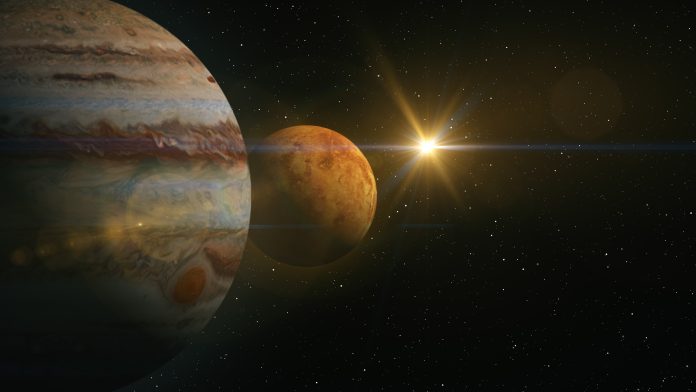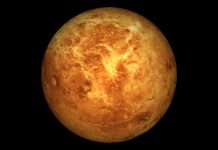Venus, the neighbour of Earth, has long puzzled scientists with its bone-dry landscape. But a study from planetary scientists at the University of Colorado Boulder has discovered the mystery of Venus’s vanishing water
In a recent paper, researchers revealed that hydrogen atoms in Venus’s atmosphere are responsible for its extreme dryness. But what does this mean?
Hydrogen atoms to blame: Dissociative recombination
Through a process called “dissociative recombination,” hydrogen atoms zip into space, causing Venus to lose water at twice the rate previously estimated. This discovery unravels Venus’s water story and also offers insights into the water dynamics of planets across the galaxy.
Lead author Eryn Cangi, from the Laboratory for Atmospheric and Space Physics (LASP), emphasises the importance of understanding water’s role in the universe, especially in the search for habitable environments.
When comparing Venus to Earth, Cangi highlights the difference in water content, with Venus having a fraction of Earth’s water despite its similar size and mass.
Venus’s water loss
“Water is really important for life,” said Eryn Cangi, “We need to understand the conditions that support liquid water in the universe, and that may have produced the very dry state of Venus today.”
The study, conducted as a giant chemistry experiment on Venus, zoomed into the reactions within its atmosphere. It identified a molecule called HCO+ as a key player in Venus’s water loss.
This molecule, high in Venus’s atmosphere, reduces the escape of hydrogen atoms, effectively draining the planet’s water reservoir.
“We’re trying to figure out what little changes occurred on each planet to drive them into these vastly different states,” said Cangi, who earned her doctorate in astrophysical and planetary sciences at CU Boulder in 2023.
But why is Venus so dry when it likely received water during its formation billions of years ago?
The researchers propose that a greenhouse effect, driven by clouds of carbon dioxide, led to the evaporation of Venus’s water into steam, with most of it eventually escaping into space. However, what remained continued to disperse, largely due to the HCO+ molecule.
HCO+ has never been directly observed around Venus. With new missions such as NASA’s DAVINCI, equipped to explore Venus’s atmosphere, scientists are hopeful for future breakthroughs.
These missions promise to unveil more about Venus’s water dynamics and planetary evolution.
Editor's Recommended Articles
-
Must Read >> NASA announces two missions to Venus for 2030















